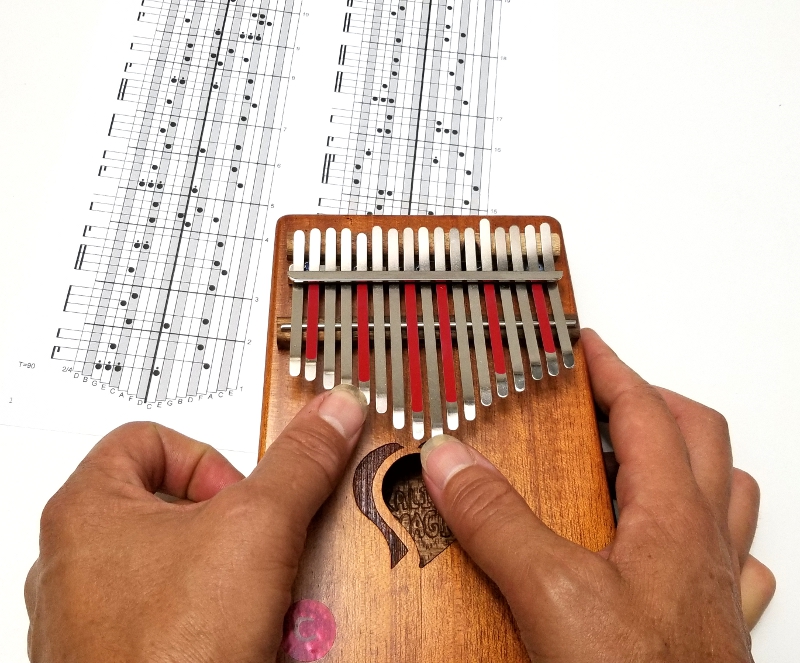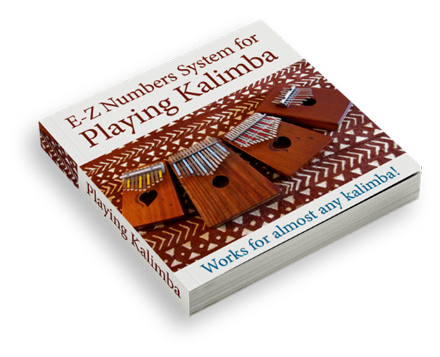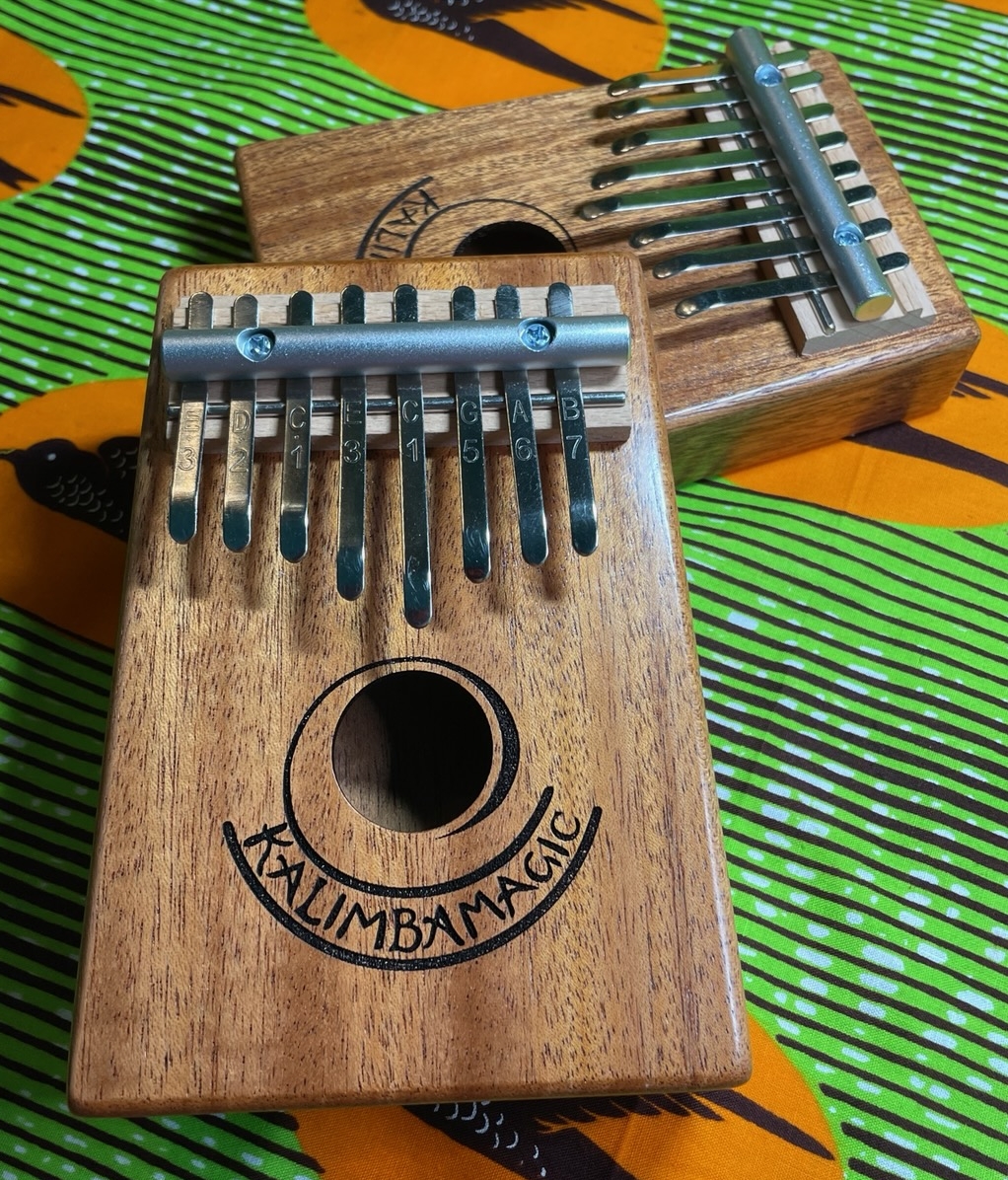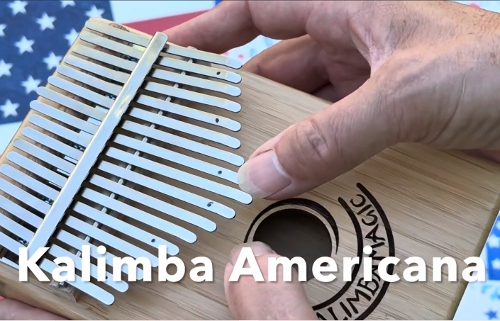
Check out the tablature to the left, and the thumb positions on the kalimba.
First thing: the kalimba tablature is a map of the kalimba tines. You can see the bottom of one tablature staff just above my index finger – the bottom of the tabs is shaped like the kalimba tines! Also, the painted tines on the kalimba map to the shaded tines on the tab.
Second thing: there are two “staves” of “staffs” of tablature, one on the left and one on the right. The left one comes first… and you play the music from the bottom to the top before going to the next staff.
Third thing: look at the note symbols on the bottom left of the tablature, where it starts. There is a dark black line that splits each staff of tablature into left and right notes.
There is a three note chord on the left side, starting on the middle-left shaded column. This maps to the left thumb sitting on the painted “C” tine, ready to sweep across in the glissando to play multiple tines. There is a single note just to the right of the black dividing line, played by the right thumb… and there is my right thumb on the central unpainted tine, C.
One thing about the kalimba: each different type of kalimba, with different number of notes, and different tunings, will require a different tablature, and different books.
Fortunately, Kalimba Magic is up to the task. We have created almost 100 different Kalimba PDF Downloads and Kalimba Books. Check them out and find the book that is best for you!


Sign up for our newsletter and free resources with your email address:
We pinky promise not to spam you and to only send good stuff.
 Christmas in July 2025
Christmas in July 2025 Patriotic and American Music for Kalimba
Patriotic and American Music for Kalimba